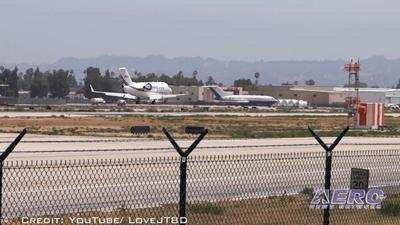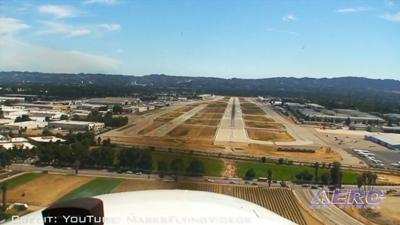Thu, Jun 30, 2022
… Or Forever Hold Your N1
Van Nuys Airport (VNY)—America’s busiest general aviation airport—announced the recipients of its 2021 Friendly Flyer Awards. The awards honor general aviation companies and corporate flight departments for their efforts to reduce the noise of their aircraft operations.

Eighteen aircraft operators received recognition plaques for complying with the airport’s mandatory noise abatement policies. Compliance, in this instance connotes at least 99-percent adherence to all noise-abatement programs and reduced nighttime jet arrivals and departures under the somewhat unimaginatively named Quieter Nights Program.
Over the past four decades, VNY has implemented a wide and aggressive gauntlet of noise abatement programs and policies. Mandatory efforts began with the establishment of a partial nighttime departure curfew in 1981, followed by a rule prohibiting the addition of Stage-II aircraft in 2002, and a noisier jet phase-out in 2009. These regulations, along with voluntary measures – such as the No Early Turn Helicopter Route and Altitude Deviation, Quiet Jet Departure and Quieter Nights Programs – depend on the ongoing compliance of both VNY-based and transient pilots.
Notwithstanding award programs, environmental theater, and institutional self-aggrandizement, overly-aggressive airport noise-abatement procedures present hazards to both aircraft and the communities over which they depart and arrive.

The business of drastically reducing engine-power shortly after takeoff—as many noise-abatement procedures prescribe—is a dangerous one. Contradictory arguments predicated upon the notion that V1 is all the departure speed an aircraft requires are sophistic, and speak to a worrying misunderstanding of rudimentary aerodynamic principles.
Noise-abatement procedures that combine partial-power climbs and low-altitude, post-departure turns are particularly hazardous—especially to aircraft departing into IMC. What’s more, noise-abatement regulations—because they are enforceable by FAA action against both pilot and air-carrier certificates—are apt to shift a pilot’s focus from keeping his aircraft safe to keeping it quiet.
More News
Aero Linx: Model Aeronautical Association of Australia MAAA clubs are about fun flying, camaraderie and community. For over 75 years, the MAAA has been Australia’s largest fl>[...]
Touchdown Zone Lighting Two rows of transverse light bars located symmetrically about the runway centerline normally at 100 foot intervals. The basic system extends 3,000 feet alon>[...]
“Discovery and innovation are central to our mission at Virgin Galactic. We’re excited to build on our successful record of facilitating scientific experiments in subor>[...]
How To Get A Story On Aero-TV News/Feature Programming How do I submit a story idea or lead to Aero-TV? If you would like to submit a story idea or lead, please contact Jim Campbel>[...]
Student Pilot Reported That During Rotation, “All Of A Sudden The Back Of The Plane Kicked To The Right..." Analysis: The student pilot reported that during rotation, “>[...]
 ANN's Daily Aero-Linx (05.02.24)
ANN's Daily Aero-Linx (05.02.24) ANN's Daily Aero-Term (05.02.24): Touchdown Zone Lighting
ANN's Daily Aero-Term (05.02.24): Touchdown Zone Lighting Aero-News: Quote of the Day (05.02.24)
Aero-News: Quote of the Day (05.02.24) ANN FAQ: Contributing To Aero-TV
ANN FAQ: Contributing To Aero-TV NTSB Final Report: Cirrus Design Corp SR20
NTSB Final Report: Cirrus Design Corp SR20




